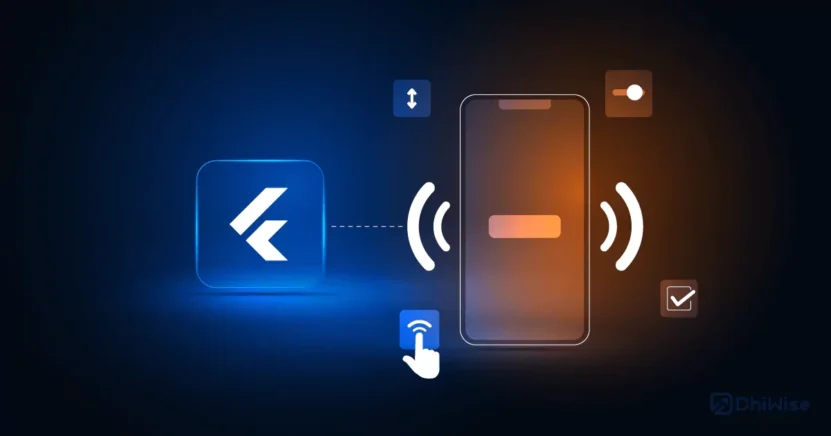If I were to ask anyone here right now about their love language, some may answer “physical touch.” But how can we experience this if our loved ones are far from us?
Imagine being able to feel a loved one’s hug or a friend’s high-five through a digital message; this is where haptic messaging comes in.
This incredible technology allows people to experience sensations through their devices. In this article, let’s delve into the possibilities, uses, and potential future effects of this development.
Exploring Haptic Messaging

Haptic messaging is an exciting technology that enhances digital communication by integrating sensory experiences. Instead of relying on text-based messages, it enables the transmission of physical sensations through devices. It’s like experiencing a gentle touch or subtle vibrations when receiving a message.
This tech unlocks expressive possibilities. Instead of saying “I’m happy,” you can send a haptic message that feels like a warm hug. For excitement, a vibrating message sets the tone. Haptic messaging adds a personal, tangible layer to our digital interactions, similar to how iPhones incorporate this feature in their settings, as stated in Medium, creating a more authentic experience. It goes beyond words, enabling deeper connections. Whether conveying love, support, or simply adding fun to chats, this kind of technology transforms digital communication.
How Haptic Technology Works Scientifically
Haptic technology delves into haptics, exploring touch perception. Special devices with actuators and sensors simulate various touch sensations. Actuators generate vibrations or forces, while sensors detect and interpret touch inputs. This technology was recently featured in a Science Focus article, discussing an innovation involving vibrating vests designed to bring music to life for deaf gig-goers. These devices recreate diverse tactile experiences, from a gentle caress to different surface textures. Users not only receive haptic feedback but also interact with digital content through touch.
Advancements in haptic tech find wide application, from smartphones and gaming controllers to virtual reality systems, enriching user experiences with lifelike touch. In real-life scenarios, haptic messaging holds transformative potential in personal and professional fields.
In personal relationships, it strengthens emotional bonds across distances. Picture sending a comforting hug or feeling a loved one’s heartbeat during a video call, fostering closeness.
Professionally, haptic messaging revolutionizes remote collaboration. It goes beyond text, enabling subtle cues and nonverbal feedback. A gentle squeeze in a virtual meeting can signify agreement, enhancing communication. This nuanced form of communication nurtures better collaboration and teamwork.
Future Prospects and Difficulties

Haptic messaging shows huge potential but faces challenges for widespread use. Making affordable, accessible devices that work with existing platforms is key. Current devices can be costly and not widely available, limiting access. Advancements in tech and manufacturing are needed to make them affordable for everyone.
Privacy and security are vital. Transmitting physical sensations online demands strong protection for users’ data and control over haptic interactions. Robust encryption and privacy measures are essential to safeguard personal info and prevent unauthorized access.
The future holds promise. Advancements like smaller actuators and more realistic feedback will drive wider adoption. Smaller, cheaper, and advanced haptic devices will seamlessly integrate into everyday devices, like smartphones and wearables.
Gaming and Haptic Feedback
It’s intriguing to use haptics in games. Gaming has seen remarkable advancements in haptic feedback, from basic rumble features to sophisticated technologies. Initially, according to XeelTech, games used simple vibrations in controllers like in “Virtua Racing,” “Daytona USA,” and “Sega Rally 2.” These featured force-feedback steering wheels that shook according to in-game actions. Now, gaming employs diverse technologies for realistic tactile experiences. Electromagnetic, piezoelectric, kinesthetic, and surface haptic actuators are prevalent. Linear resonant actuators (LRA) or voice coils (VCM) are common in modern controllers and smartphones, offering lifelike sensations. Innovations like VR Haptic Gloves use motors, wires, or air chambers to simulate pressure and traction.
These advancements aren’t just transforming traditional gaming. They’re paving the way for a future where even your favorite online casinos could offer these immersive, tactile experiences. Keeping up with the changing landscape means knowing which platforms are setting the pace. Visit CasinoReviews, it is an invaluable resource for navigating the online casino world and discovering the front-runners in these thrilling technological advancements.
Haptic feedback enriches the game experience in several ways:

Engagement: Haptic feedback can replicate the recoil of a gun, the impact of a punch, or the bounce of a ball off a surface. Experiencing physical responses to their inputs keeps players engaged and motivated, showcasing the direct impact of their actions.
Differentiation: By offering unique haptic sensations for various objects, players can receive tactile cues that distinguish between elements like obstacles, collectibles, or interactive objects. For instance, a specific haptic feedback pattern might hint at the presence of a hidden item, while another could signal an enemy or a hazardous area.
Competitive advantage: When competing in gaming, every split second and precise movement count. Haptic feedback becomes pivotal in refining players’ control and boosting their accuracy. For instance, in a first-person shooter game, haptic feedback offers subtle vibrations or resistance aligned with the player’s actions, aiding them in gauging their aim more effectively and making necessary adjustments.
Personalization: Players can change the haptic input to fit their own play styles and tastes, making the game exactly how they want it to be.
Emotional Engagement: It’s possible for haptic feedback to make you feel things and make games more emotional. In a horror game, for example, the controller can send out strong vibrations during scary or suspenseful scenes, making the player feel even more scared and nervous. Having these feelings involved makes the game more intense and gives it more meaning.
Accessibility and Inclusivity: Haptic input can also make games more accessible and open to everyone. By using physical cues, it makes it easier for people who are blind or have low vision to move around and interact with the game. Haptic feedback can also improve the game experience for people who have trouble hearing by giving them another sense of feedback.
Conclusion
Haptic messaging is a revolutionary leap in communication tech. It intertwines touch with digital messaging, enriching connections and understanding. With ongoing haptic tech advancements, expect more innovations in this realm. The future of communication extends beyond words and visuals to include sensations. Haptic messaging offers immersive and meaningful ways to communicate.
